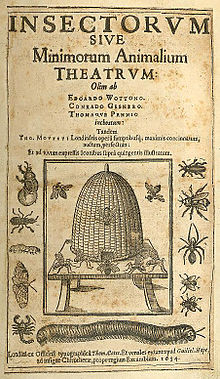
Insects have appeared in literature from classical times to the present day, an aspect of their role in culture more generally. Insects represent both positive qualities like cooperation and hard work, and negative ones like greed.
Among the positive qualities, ants and bees represent industry and cooperation from the Book of Proverbs and Aesop's fables to tales by Beatrix Potter. Insects including the dragonfly have symbolised harmony with nature, while the butterfly has represented happiness in springtime in Japanese Haiku, as well as the soul of a person who has died.
Insects have equally been used for their strangeness and alien qualities, with giant wasps and intelligent ants threatening human society in science fiction stories. Locusts have represented greed, and more literally plague and destruction, while the fly has been used to indicate death and decay, and the grasshopper has indicated improvidence. The horsefly has been used from classical times to portray torment, appearing in a play by Aeschylus and again in Shakespeare's King Lear and Antony and Cleopatra; the mosquito has a similar reputation.
© MMXXIII Rich X Search. We shall prevail. All rights reserved. Rich X Search
